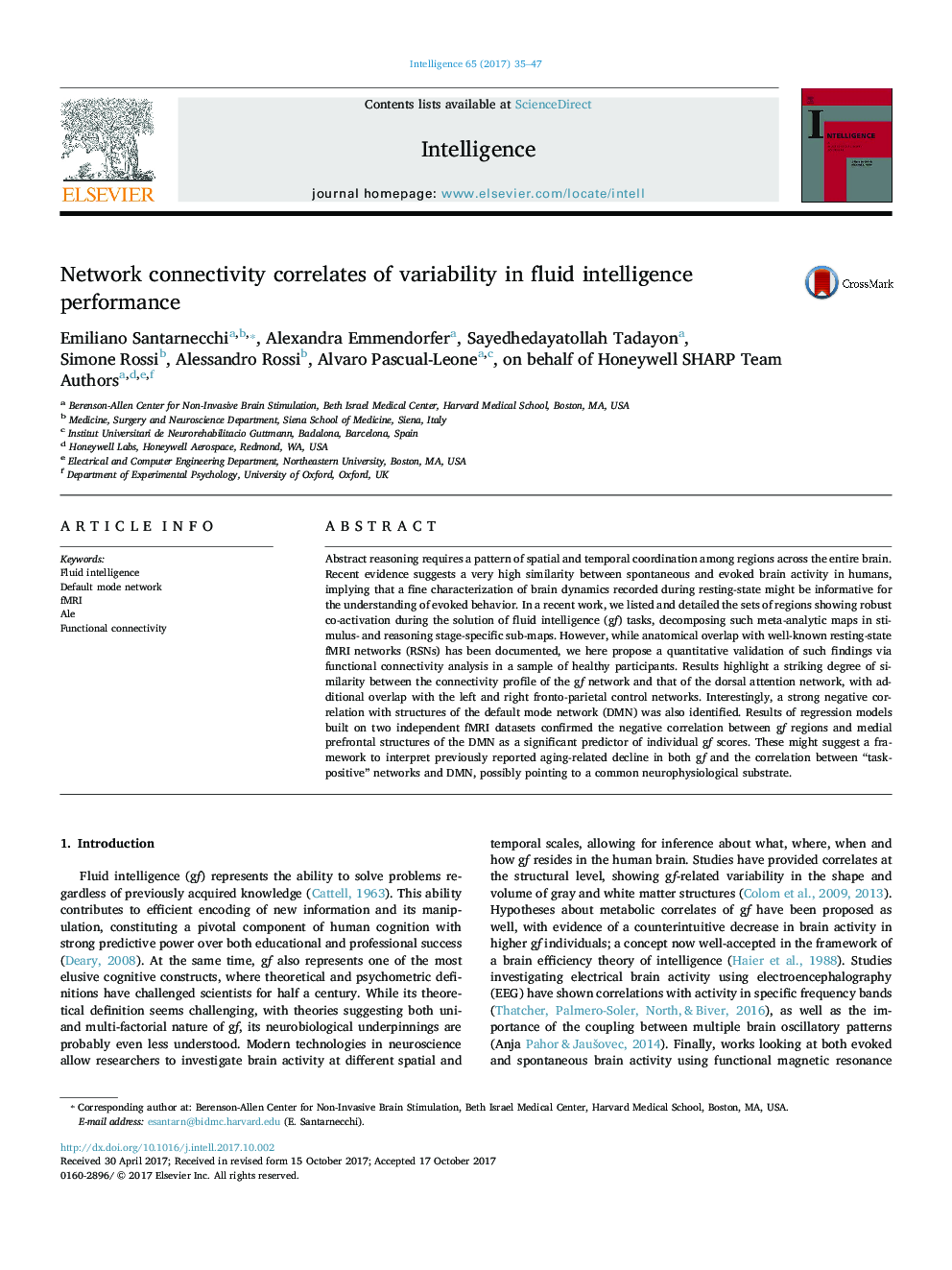| Article ID | Journal | Published Year | Pages | File Type |
|---|---|---|---|---|
| 7293053 | Intelligence | 2017 | 13 Pages |
Abstract
reasoning requires a pattern of spatial and temporal coordination among regions across the entire brain. Recent evidence suggests a very high similarity between spontaneous and evoked brain activity in humans, implying that a fine characterization of brain dynamics recorded during resting-state might be informative for the understanding of evoked behavior. In a recent work, we listed and detailed the sets of regions showing robust co-activation during the solution of fluid intelligence (gf) tasks, decomposing such meta-analytic maps in stimulus- and reasoning stage-specific sub-maps. However, while anatomical overlap with well-known resting-state fMRI networks (RSNs) has been documented, we here propose a quantitative validation of such findings via functional connectivity analysis in a sample of healthy participants. Results highlight a striking degree of similarity between the connectivity profile of the gf network and that of the dorsal attention network, with additional overlap with the left and right fronto-parietal control networks. Interestingly, a strong negative correlation with structures of the default mode network (DMN) was also identified. Results of regression models built on two independent fMRI datasets confirmed the negative correlation between gf regions and medial prefrontal structures of the DMN as a significant predictor of individual gf scores. These might suggest a framework to interpret previously reported aging-related decline in both gf and the correlation between “task-positive” networks and DMN, possibly pointing to a common neurophysiological substrate.
Related Topics
Social Sciences and Humanities
Psychology
Experimental and Cognitive Psychology
Authors
Emiliano Santarnecchi, Alexandra Emmendorfer, Sayedhedayatollah Tadayon, Simone Rossi, Alessandro Rossi, Alvaro Pascual-Leone, Honeywell SHARP Team Authors Honeywell SHARP Team Authors,
